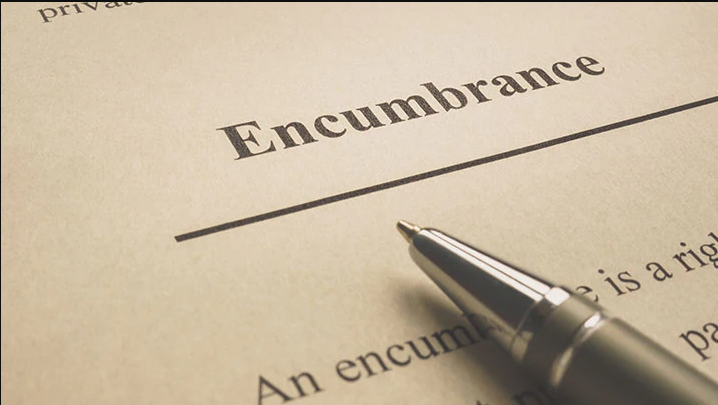Everything You Need to Know About Encumbrance Certificate

An encumbrance certificate, also known as a property certificate or a clear title certificate, is a document that provides information about the financial liabilities and legal ownership of a piece of property. It is an important document that can help potential buyers, lenders, and other parties understand the status of a property and ensure that they are making informed decisions about its ownership and use.
In this article, we will delve into the details of encumbrance certificates, explaining what they are, why they are important, and how to obtain one.
What is an Encumbrance Certificate (EC)?
An encumbrance certificate is a document that is issued by the local government or the registrar of land records in a particular region. It provides information about the financial liabilities and legal ownership of a piece of property, including any mortgages, liens, or other encumbrances that may be attached to it.
The EC lists all the transactions that have taken place in relation to the property, including the purchase, sale, mortgage, and transfer of ownership. It also provides information about any disputes or legal issues that may be pending in relation to the property.
Why is an Encumbrance Certificate (EC) Important?
An encumbrance certificate is important for a number of reasons. First and foremost, it helps potential buyers and lenders understand the status of a property and ensure that they are making informed decisions about its ownership and use.
For example, if a potential buyer is considering purchasing a property, they will want to know if there are any outstanding mortgages or liens on the property that they will be responsible for paying off. An EC will provide this information, allowing the buyer to make an informed decision about whether or not to proceed with the purchase.
Similarly, lenders will often require an encumbrance certificate before approving a mortgage or loan for a property. This helps them ensure that the property is free and clear of any financial liabilities that may make it a risky investment.
In addition to providing important information for buyers and lenders, an encumbrance certificate can also help property owners protect their interests. By obtaining an encumbrance certificate, property owners can confirm that they have a clear title to their property and that there are no outstanding issues that may affect their ownership.
Types of Encumbrance Certificates
There are several types of encumbrance certificates that can be issued, depending on the specific needs and circumstances of the individual or entity requesting the certificate. Some common types of encumbrance certificates include:
- Property Encumbrance Certificate: This type of certificate provides information about the financial liabilities and legal ownership of a particular piece of property. It lists all the transactions that have taken place in relation to the property, including the purchase, sale, mortgage, and transfer of ownership.
- Vehicle Encumbrance Certificate: This type of certificate provides information about the financial liabilities and legal ownership of a particular vehicle, such as a car or truck. It lists all the transactions that have taken place in relation to the vehicle, including the purchase, sale, and transfer of ownership.
- Bank Encumbrance Certificate: This type of certificate is issued by a bank and provides information about the financial liabilities and legal ownership of a particular property. It is often used by banks to confirm that a property is free and clear of any outstanding mortgages or liens before approving a loan.
- Short-term Encumbrance Certificate: This type of certificate is valid for a shorter period of time, typically 30 days or less. It is often used when a property is being sold or transferred, as it provides a snapshot of the property’s status at a particular point in time.
- Long-term Encumbrance Certificate: This type of certificate is valid for a longer period of time, typically more than 30 days. It is often used by property owners or lenders to confirm the status of a property over an extended period of time.
Regardless of the type of EC being issued, the information contained in the certificate will be similar. It will include details about the financial liabilities and legal ownership of the property, as well as any pending disputes or legal issues
How to Obtain an Encumbrance Certificate
To obtain an encumbrance certificate, you will need to approach the local government or the registrar of land records in the region where the property is located. You will typically need to provide the following information:
- The address or location of the property
- The name of the current owner of the property
- Any relevant documents, such as a copy of the property deed
You may also need to pay a fee to obtain the EC. The process for obtaining an encumbrance certificate can vary depending on the region, so it is a good idea to check with the local government or registrar for specific instructions.
In some cases, you may be able to obtain an encumbrance certificate online through the local government’s website or through a private service provider. This can be a convenient option, as it allows you to request the certificate from the comfort of your own home.
Documents Required to Get an Encumbrance Certificate
To obtain an encumbrance certificate, you will typically need to provide the following documents:
- A completed application form: Most local governments and registrars will have a specific application form that you will need to fill out in order to request an encumbrance certificate. This form will typically ask for basic information such as the property’s address and the name of the current owner.
- A copy of the property deed: This document provides proof of ownership of the property and is often required when requesting an encumbrance certificate.
- ID proof of the property owner: You will typically need to provide a copy of your government-issued identification, such as a driver’s license or passport, to confirm your identity and establish your relationship to the property.
- Payment for the encumbrance certificate fee: Most local governments and registrars will charge a fee for issuing an encumbrance certificate. You will need to pay this fee using a credit card, cash, or other accepted payment method.
It is important to note that the specific documents required to obtain an encumbrance certificate may vary depending on the region, so it is a good idea to check with the local government or registrar for a complete list of requirements. Additionally, you may need to provide additional documentation if there are any pending disputes or legal issues related to the property.
How to Get Encumbrance Certificate Online
To apply for an encumbrance certificate online, you will need to follow the steps outlined below:
- Visit the website of the local government or registrar of land records in the region where the property is located.
- Look for a link or section on the website that pertains to encumbrance certificates.
- Follow the prompts to begin the online application process. You will typically be asked to provide information such as the address or location of the property, the name of the current owner, and any relevant documents, such as a copy of the property deed.
- Pay the required fee for the encumbrance certificate using a credit card or other accepted payment method.
- Wait for the encumbrance certificate to be issued. In most cases, you will receive the certificate via email or can download it from the website.
It is important to note that the process for applying for an encumbrance certificate online may vary depending on the region, so it is a good idea to check with the local government or registrar for specific instructions.
How to Download Encumbrance Certificate for Your Property
To track the status of an encumbrance certificate, you will need to follow the steps outlined below:
- Visit the website of the local government or registrar of land records in the region where the property is located.
- Look for a link or section on the website that pertains to encumbrance certificates.
- Follow the prompts to access the online tracking system for encumbrance certificates.
- Enter the required information, such as the property’s address or the certificate number, to access the status of the certificate.
- The online tracking system will provide information about the current status of the encumbrance certificate, including whether it has been issued, is being processed, or is still pending.
It is important to note that the process for tracking the status of an encumbrance certificate may vary depending on the region, so it is a good idea to check with the local government or registrar for specific instructions.
Usage of Encumbrance Certificate
An encumbrance certificate is a document that provides information about the financial liabilities and legal ownership of a piece of property. It is commonly used in a variety of situations, including:
- Property Purchases: When a property is being sold, the buyer will often request an encumbrance certificate to confirm that there are no outstanding mortgages or liens on the property. This helps the buyer understand the true cost of the property and ensures that they are not taking on any unexpected financial liabilities.
- Mortgage Approvals: Lenders will often require an EC certificate before approving a mortgage or loan for a property. This helps the lender confirm that the property is free and clear of any outstanding debts or legal issues that may make it a risky investment.
- Property Transfers: If a property is being transferred from one owner to another, an EC can help confirm that the property is free and clear of any financial liabilities or legal issues.
- Legal Disputes: If there is a dispute or legal issue related to a property, an EC can help provide important information about the property’s ownership and financial status.
Overall, an EC is a valuable document that can help buyers, lenders, and property owners understand the true status of a piece of property and make informed decisions about its ownership and use.
Conclusion
An EC is a valuable document that provides information about the financial liabilities and legal ownership of a piece of property. It is important for potential buyers and lenders to understand the status of a property before making a purchase or providing a loan, and it can also help property owners protect their interests by confirming that they have a clear title to their property. To obtain an EC, you will need to approach the local government or the registrar of land records in the region where
Read Also : Everything You Need to Know About Encumbrance Certificate




